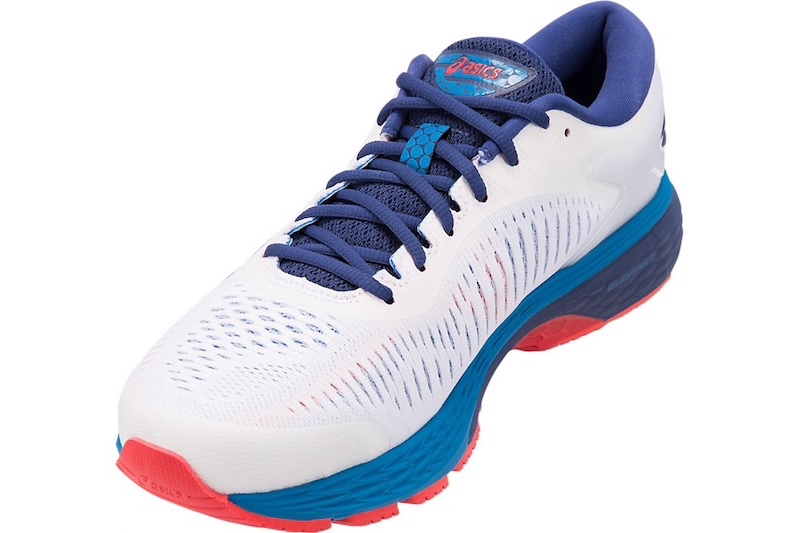
One of the biggest challenges that running shoe manufacturers face is finding ways to improve the lifespan of their products without compromising weight. Over the years, many have discovered ways to improve durability, but they often end up creating heavier shoes as a result. But Japanese sportswear company Asics believes it has found a solution to this problem in the form of cellulose nanofibers (CNF), a potential material that is made from the biomass of plants.
Asics announced that the latest edition of its flagship long-distance running shoe, the Gel-Kayano, will feature a new version of the company’s trademark Flytefoam midsole technology. This material has been a staple in Asics’ shoes for several years now and has been lauded by athletes for its ability to absorb the impact that comes with running while also quickly bouncing back to its original form. This allows FlyteFoam to provide the same level of cushioning across the entire length of a workout, reducing injuries and keeping a runner’s legs fresher as a result.
The new version of the Asics midsole is dubbed Flytefoam Lyte and it promises to provide a similar level of cushioning and performance, but thanks to the integration of cellulose nanofibers runners will see improved durability and strength. That is due to the fact that CNFs are approximately one-fifth the weight of steel, while managing to be five times stronger. This has, of course, made these fibers one of the most promising new materials to come along in some time, with other companies currently exploring their use in a wide variety of products, including electronics, cars, and textiles.
Asics says that when it incorporated CNFs into the Gel-Kayano 25, the strength of the midsole was increased by 20 percent and durability went up by as much as seven percent. At the same time, Flytefoam Lyte remained 55 percent lighter than the typical ethyl vinyl acetate (EVA) materials that are commonly used across much of the footwear industry. In other words, overall performance went up while weight remained the same.
Obviously, creating better shoes is part of what drives innovation as Asics, but the use of CNFs has another benefit as well. Since they are created from natural plant materials, the company is also reducing its carbon footprint. In theory, shoes made from cellulose nanofibers will last longer, but if they do end up in a landfill they will have less of an environmental impact.
Editors' Recommendations
- 4 simple pieces of tech that helped me run my first marathon
- 2022 Infiniti QX60 aims to make school runs more stylish
- Spotify is making it even easier to judge your friends’ musical tastes
- New lightweight robot exosuit makes walking and running a whole lot easier
- Amazon makes it even easier for you to receive your packages


